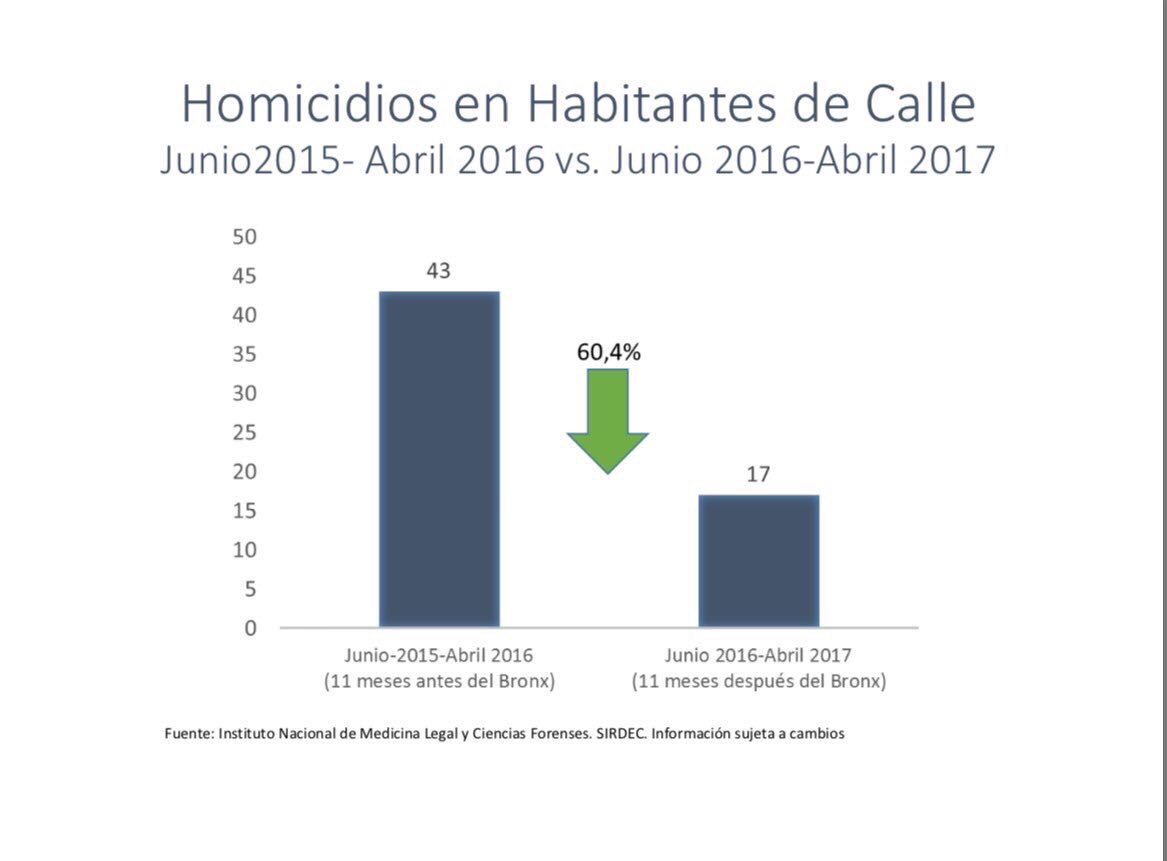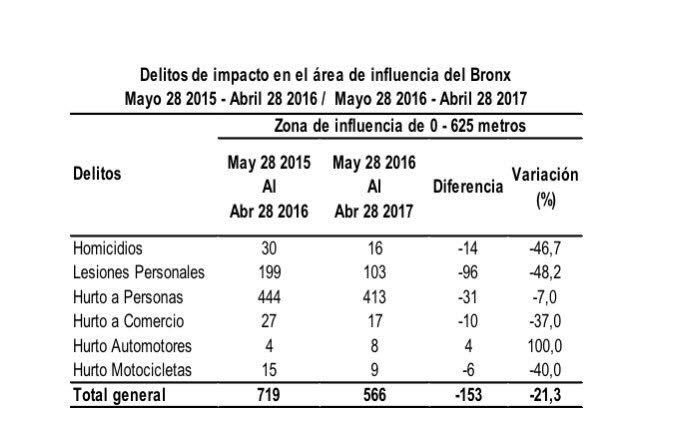 <br>
<br>
Analytic Note: In an interview with the Coordinator of anti-sexual exploitation programs at IDIPRON, the Bogotá agency that works with street-connected youth, described the chaos that IDIPRON faced the morning of the intervention.
Source Excerpt: <br>
IDIPRON Coordinator: Nosotros nos enteramos el día de la intervención. […] [the director of IDIPRON] dijo ese día “Venga o sea, nosotros vamos atender todo.” No estábamos preparados para que… de un momento a otro abran todas las casas. Porque eso era una locura. […] Donde llegamos a las casas, 2000 personas o sea, no podíamos caminar. Nos tocó… como somos entidad Distrital, toda la contratación se hace mediante contratación pública y requiere de tiempos, es decir, si yo necesito comprar unas hojas, yo necesito hacer un proceso de contratación. S sea, el instituto no puede llegar y decir “Yo tengo 1000 pesos, voy a la tienda y le compro al de la tienda”. No, tiene que concursar, tú sabes cómo se maneja acá. Tú tienes que concursar, te ganas el concurso. Que ahí es donde entra la corrupción de por medio porque les dan contratos ¿sí?... Pero se supone que es un concurso público y transparente. Entonces, cuando pasó lo del Bronx nosotros tuvimos que, o sea necesitábamos camas, más comida, una casa, o sea… muchas cosas más.
AUTHOR: Como papel higiénico… cositas así.
IDIPRON Coordinator: Shampoo, cepillos de dientes, ropa, pijamas, zapatos… y nos tocó llegar a empezar a con… a contratar rápidamente… o sea eso fue una locura.
AUTHOR: Sí, me imagino.
IDIPRON Coordinator: Entonces claro, se pudo haber… claro… nosotros dijimos como “Uh qué pasó”, pero respondimos, o sea, pudimos dar respuesta porque en bodega habían cosas, porque… ¿sí? Pudimos dar respuesta. Entonces eso primero. Nos enteramos unas horas antes, o sea, como “En una hora el Bronx se va a acabar, prepárense”. Y nosotros…
AUTHOR: Sí… Entonces [the director of IDIPRON] no estaba involucrado como… en la operación…
IDIPRON Coordinator: De seguridad, nada… Él se enteró una hora antes, de que el… de que fuera el operativo. Es decir, como “Padre, en una hora se acaba el Bronx y usted va a tener miles de habitantes de calle en sus casas, por favor prepárese” Eso fue como, que escribió… eso fue un fin de semana y escribió como por el mensaje de…
AUTHOR: Como a las 4 de la mañana.
IDIPRON Coordinator: Sí, el mensaje de directivos se escribió como “Por favor todos alerta en una hora hay un…” Ah no, aparte le dijeron “No puedes decir que hay operativo” o sea, “No digas nada” Porque se podía tirar todo y eran 3000 hombres preparados para entrar a una zona, o sea, se podía… ellos dicen como “Campanear” y se dañaba. Entonces claro ellos después se ubicaron nosotros no podíamos decirle a nadie porque era un operativo secreto; si contábamos se nos tiraban todo. Entonces nosotros como… bueno pues… entonces le dijeron a Wilfredo “No diga nada” él lo que nos escribió fue como…
AUTHOR: Pero todos estaban durmiendo.
IDIPRON Coordinator: No pues igual en IDIPRON, yo trabajo 24/7 o sea, hay noches donde, mira empiezan el operativo a las 10 yo termino a las 5 de la mañana y a las 7 tengo que volver. O sea, es una locura, es un trabajo muy fuerte. Entonces, claro, Wilfredo escribió como “Por favor todos pendientes que va a haber…” No dijo que un operativo, pero… “Va a haber una contingencia en la calle y pues de pronto van a llegar más personas” Ah bueno pues con razón… normal. Ah listo vale. Entonces él sí empezó “Preparen la casa de Oasis, por favor pongan más camas…” Pero cálmese, o sea, no ha pasado nada… ¡Ja!
Source Excerpt Translation:<br>
IDIPRON Coordinator: We learned about it the day of the intervention. […] [the director of IDIPRON] said that day, "Come on, we are going to take care of everything.” We were not prepared for that... from one moment to the next, to open all the houses [shelters]. Because that was crazy. […] Where we arrived at the houses, there were 2000 people, we could not walk. We had to... since we are a state agency, all hiring is done through public procurement and requires time. So, if I need to buy some sheets, I need to do a procurement process. The shelter cannot arrive and say “I have 1000 pesos, I’ll go to the store and buy it from the store.” No, you have to compete for the contract, you know how it goes. You have to compete for the contract, you win the contract. That's where the corruption comes in because they get contracts, right? But it's supposed to be a public and transparent contest. Then, when the Bronx happened, we had to… so, we needed beds, more food, a house, that is... many more things.
AUTHOR: Things like toilet paper, little things like that.
IDIPRON Coordinator: Shampoo, toothbrushes, clothes, pajamas, shoes. And we had to begin to contract out very quickly. It was totally crazy.
AUTHOR: Yes, I imagine.
IDIPRON Coordinator: So of course… we said, “Uh, what happened?” but we responded, we were able to respond because we had some things in storage, right? So we were able to respond. So, that is the first thing. We learned about it a few hours before, like “In an hour, the Bronx is going to end, get ready.” And we…
AUTHOR: Yes, so then [the director of IDIPRON] was not involved in the operation?
IDIPRON Coordinator: In the security part, no. He learned about it one hour before the operation. That is to say, like, “Father, in one hour the Bronx is going to end, and you will have thousands of homeless people in your shelters, please get ready.” It was like, they wrote… it was a weekend and they wrote by message…
AUTHOR: At like, 4 in the morning.
IDIPRON Coordinator: Yes, the message giving directives was written as “Please, everyone be on alert that in one hour there will be…” Oh, no, they said “You cannot say that there is an operation.” That is, don’t say anything, because you could throw everything away and there were 3000 men prepared to enter the area. That is, you could say “ding” and it would harm the operation. So, of course after they located us, we couldn’t say anything to anyone because it was a secret operation. If we told, they would throw everything at us. And then we… well… then they said to Wilfredo “Don’t say anything” and he wrote to us
AUTHOR: But everyone was sleeping…
IDIPRON Coordinator: It’s not like that at IDIPRON, I work 24/7. That is, there are nights in which, look, they start the intervention at 10 and I finish at 5 in the morning and at 7 I have to return. It’s crazy, it’s a very tough job. So, of course, Wilfredo wrote like, “Please, everyone be prepared, there will be…” He didn’t say an operation, but… “There will be a contingency in the street and therefore more people will arrive.” Ah, that makes sense, that’s normal. Ready, ok. And then he began, “Prepare the shelter Oasis, please put out more beds….” But calmly, as if nothing was happening. Ha!



